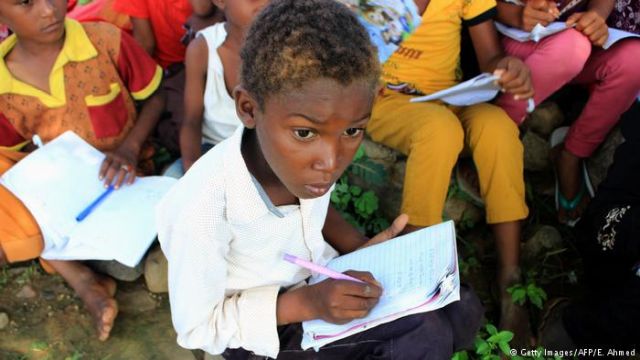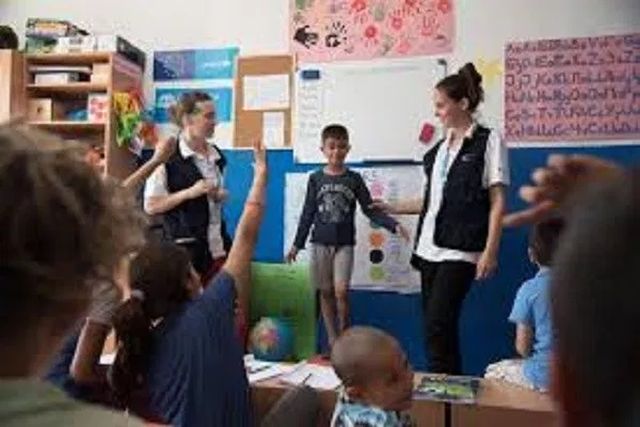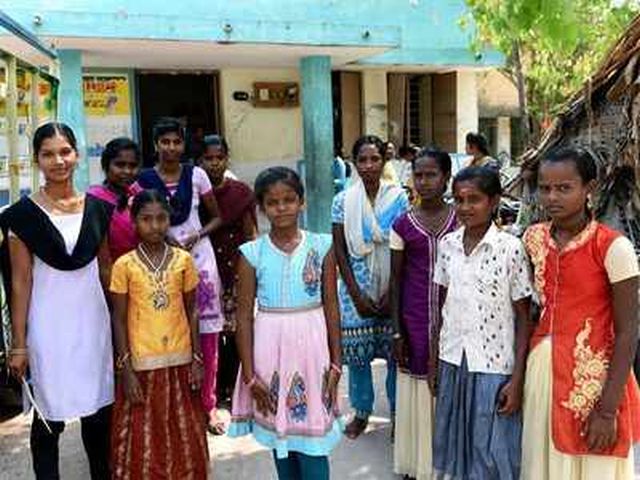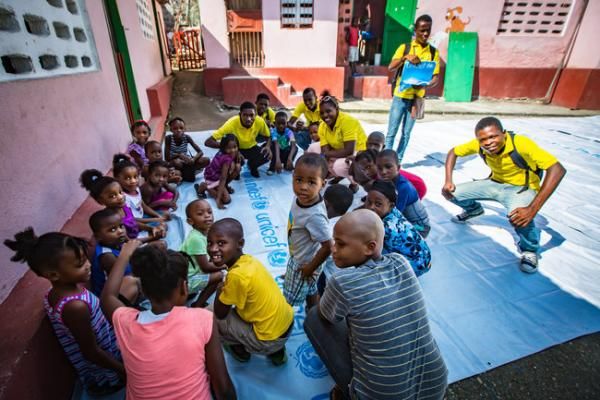
by admin | May 25, 2021 | World
 Geneva : The United Nations Children’s Fund (UNICEF) on Tuesday launched its 2019 donation appeal, calling for an extra $3.9 billion to support its programs around the world.
Geneva : The United Nations Children’s Fund (UNICEF) on Tuesday launched its 2019 donation appeal, calling for an extra $3.9 billion to support its programs around the world.
The aid would be for 41 million children, over 80 percent of whom are believed to be living in conflict zones without protection, UNICEF said in its appeal.
It said that in Yemen alone, 6.6 million children were in need of aid, pointing out that a further four million children in the Democratic Republic of Congo and 5.5 million in Syria were suffering the mental and physical consequences of conflict. Data published last December revealed that half of all Syrian children have grown up only knowing war.
“If children don’t have a safe place to play, if they’re not reunited with their families, if they’re not given psychological help, the invisible scars of war will never heal,” Executive Director Henriette Fore said, stressing that the impact of UNICEF’s programs could not be underestimated.
UNICEF is a United Nations organization with a presence in 59 countries. Children in conflict zones needed access to drinking water, food, medical attention, education and shelter, UNICEF said in its appeal.
—AB/UNA-OIC

by admin | May 25, 2021 | World
 New York : Unicef has launched a partnership with Microsoft to tackle the education crisis impacting children and young people affected by conflict and natural disasters, providing them with protection services.
New York : Unicef has launched a partnership with Microsoft to tackle the education crisis impacting children and young people affected by conflict and natural disasters, providing them with protection services.
The two along with the University of Cambridge, are developing a ‘learning passport’ — a digital platform that will facilitate learning opportunities for children and young people within and across borders, Unicef said in a statement late on Wednesday.
The learning passport would be tested and piloted in countries hosting refugees, migrants and internally displaced persons.
“Conflicts and natural disasters have disrupted learning opportunities and the quality of education for 75 million children and young people, many of whom have migrated across borders or been forcibly displaced,” said Henrietta Fore, Unicef Executive Director.
At present, many education systems in countries hosting refugees are struggling to acknowledge and recognise what refugees, migrant children and young people have already learned in school.
“This partnership is focused on creating scalable learning solutions to help millions of displaced and refugee children gain the skills they need to thrive,” noted Brad Smith, Microsoft President.
Microsoft and Unicef would also develop new innovations to protect children and young people affected by emergencies.
—IANS

by admin | May 25, 2021 | Opinions
 By Seema Rajput,
By Seema Rajput,
Almost half of India’s 1.25 billion people are aged under 25, making it the youngest nation in the world. This can be India’s biggest asset if the energies of the youth are channelised in the right direction.
This is reflected in India’s policy commitment. The government has made efforts to ensure that its youth are healthy, educated and skilled through a number of innovative schemes. Particular efforts are made to ensure education is available to marginalised communities and girls.
However, inequitable gender norms, early/forced marriage, engagement in sibling care, poor delivery of education, and lack of a safe and secure environment in schools, community and at home prevent girls from fulfilling their full potential. Girls’ voices are unheard, they have very low aspirations and don’t have the courage to take decisions for themselves and pursue life opportunities.
As per a UNICEF report, in India, one in three (34 per cent) adolescent girls (aged 15-19) who are married or in union have experienced physical, sexual or emotional violence by their husband or partner. Among these, more than one in 10 (13 per cent) have experienced sexual violence by their partner. A recent study conducted in six Indian states by Save the Children, reveals that due to lack of safe spaces like school, work place and markets, many bright girls are forced to drop out of school. They do not pursue higher education and restrict themselves from engaging in decent work due to fear, and force themselves to remain inside their homes.
The solution to many of these problems lies in empowering the girls and working with communities and the public education system to make it more welcoming. In India, we have worked to create collectives of girls, bringing together 20-25 adolescents in selected villages, to provide them with a safe space to empower them by building their leadership skills. This helps them to acquire skills, knowledge, experience and confidence, and of course have fun by expressing themselves. This safe space provides them with opportunities to break the silence, reflect, think logically, critically review issues, challenge deep-rooted gender and patriarchal norms, and emerge as effective agents of change.
This process of Participatory Action Research is an innovative, yet simple way, to train collectives to identify their safety and security issues, recognise the proliferation of such threats, understand provisions (legal and cultural) to deal with such acts, and come up with concrete plans to improve the conditions of safety and security in their geographies by engaging with powerholders. Through this process, girls in India and Nepal have addressed difficult issues like eve teasing, early and forced marriage, brought dropped-out girls back to school, and improved sanitation and hygiene in schools.
They have used legal avenues, including accessing the women’s helpline when they were abused by boys in the community, as well as in cases of their friends getting married. The cross-border discussion amongst the girls of the collectives has made them aware of the powerful actions taken on the identified issues. By doing so, they are creating a safe space for themselves and for others.
This intervention is not unique. Many organisations across the country work with adolescent girls, build their capacities and enable them to fight for their rights. More efforts are, however, needed to tap into the enthusiasm and optimism of the youth to create a strong network to push for the agenda of safe spaces and safe education. While young people themselves can be at the vanguard of change, their efforts need to be supported through a combination of mass level awareness and sensitisation of teachers, government officials and elected local self-governments to address the different dimensions of safety and security.
It is critical that everyone comes together to ensure that all children, especially marginalised adolescent girls, have safe access to education to become confident and motivated individuals.
(Seema Rajput is Technical Specialist – Education, CARE India. The views expressed are those of CARE India)
—IANS

by admin | May 25, 2021 | Muslim World
 United Nations : Yemen’s education system has been devastated by the country’s brutal conflict, the United Nations Children’s Fund (UNICEF) said here on Tuesday, reporting that at least half a million children have dropped out of school since the escalation of the war in 2015.
United Nations : Yemen’s education system has been devastated by the country’s brutal conflict, the United Nations Children’s Fund (UNICEF) said here on Tuesday, reporting that at least half a million children have dropped out of school since the escalation of the war in 2015.
“An entire generation of children in Yemen faces a bleak future because of limited or no access to education,” said Meritxell Relano, UNICEF Representative in Yemen.
“Even those who remain in school are not getting the quality education they need.”
The total number of out-of-school children now stands at about 2 million, and almost three quarters of public school teachers have not been paid their salaries in over a year, putting the education of an additional 4.5 million children at grave risk, Xinhua reported.
More than 2,500 schools are out of use, with two thirds damaged by attacks, 27 per cent closed and 7 per cent used for military purposes or as shelters for displaced people.
Children risk being killed on their way to school. Fearing for their children’s safety, many parents choose to keep their children at home, according to UNICEF.
The lack of access to education has pushed children and families to dangerous alternatives, including early marriage, child labour and recruitment into the fighting.
UNICEF appeals to the warring parties, those who have influence on them, government authorities and donors to put an end to the war, pay teachers, protect children’s education unconditionally, and increase funding for education.
On March 26, 2015, a coalition of countries led by Saudi Arabia intervened militarily at the request of Yemeni President Abd Rabbuh Mansour Hadi to secure the return of the government to Sanaa, which had been seized by Houthi militias and allied units of the armed forces when the conflict initially erupted in 2014.
Three years on, the fighting is still raging and the United Nations has listed Yemen as the country of the world’s number one humanitarian crisis, where seven million Yemenis are on the brink of famine.
—IANS

by admin | May 25, 2021 | Muslim World
 Amman : Three years of war coupled with decades of chronic underdevelopment in Yemen has resulted in 11 million children plagued by malnutrition and disease and facing acute humanitarian needs, according to the Unicef.
Amman : Three years of war coupled with decades of chronic underdevelopment in Yemen has resulted in 11 million children plagued by malnutrition and disease and facing acute humanitarian needs, according to the Unicef.
Geert Cappelaere, Unicef’s regional director for the Middle East and North Africa, said on Sunday that Yemeni children have been killed or seriously injured at a minimum rate of five per day in 2017 alone, reports Xinhua news agency.
The outbreaks of cholera and diphtheria have also claimed hundreds of lives.
“Much more attention is needed to (be paid to) the situation in Yemen. This has been rightly described as one of the worst humanitarian crises the world has ever known,” Cappelaere told reporters.
Yemen, already one of the poorest countries in the Middle East, has been devastated by a civil war since 2015, when what was supposed to be a peaceful transition of power from the long-time president Ali Abdullah Saleh, to his deputy Abdrabbuh Mansour Hadi evolved into a regional conflict.
With the Houthi rebel group joining the fight as well as an intervention by the coalition troops led by Saudi Arabia, Yemen has been dragged into a civil war which shows no sign of abating.
“It is fair to say today that every single girl and boy in Yemen is facing acute humanitarian needs,” Cappelaere said, adding that the war and underdevelopment had done “unfortunately nothing good” for the children.
The official said there were 200,000 children suffering from severe malnutrition in 2015, already one of the highest numbers in the world by then. Yet, the number has doubled in three years’ time till now, according to Cappelaere.
Further elaborating on the worsening humanitarian situation in the war-torn country, Cappelaere said that close to 2 million Yemeni children were deprived of education, and that a large proportion of girls are forced to marry at early ages — 75 per cent of them before the age of 18 and half younger than 15.
The official called for an immediate cease of war and urged authorities in all parts of the country to allow entry of humanitarian assistance without preconditions.
—IANS

 Geneva : The United Nations Children’s Fund (UNICEF) on Tuesday launched its 2019 donation appeal, calling for an extra $3.9 billion to support its programs around the world.
Geneva : The United Nations Children’s Fund (UNICEF) on Tuesday launched its 2019 donation appeal, calling for an extra $3.9 billion to support its programs around the world.



